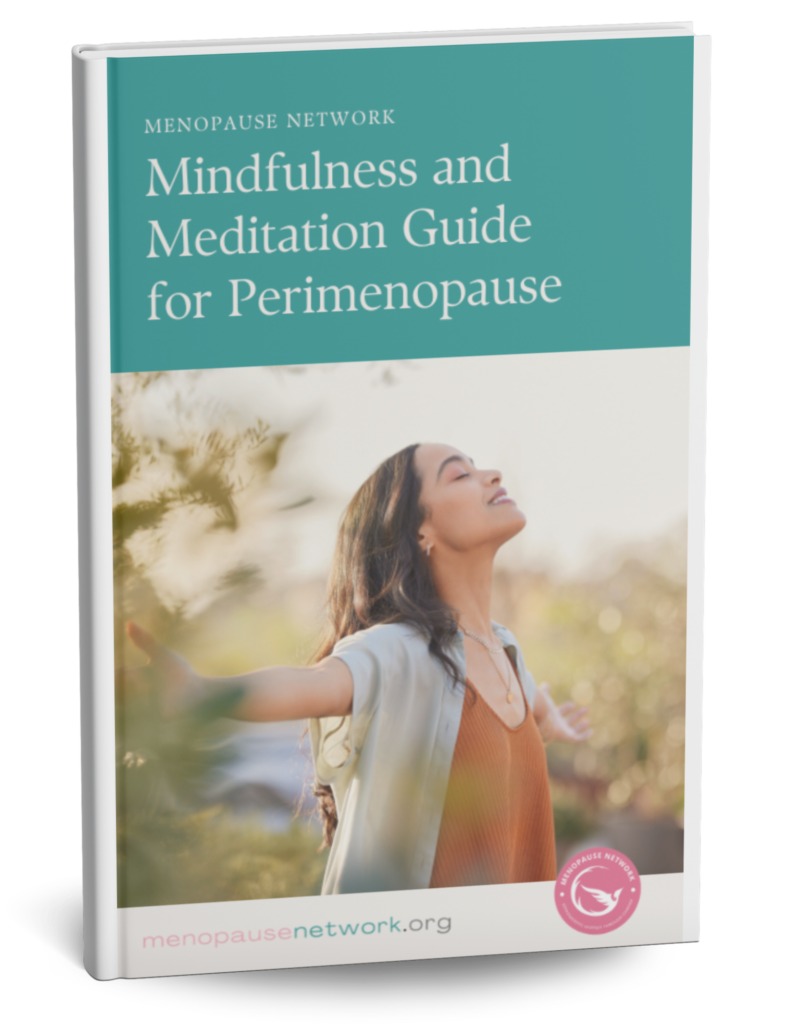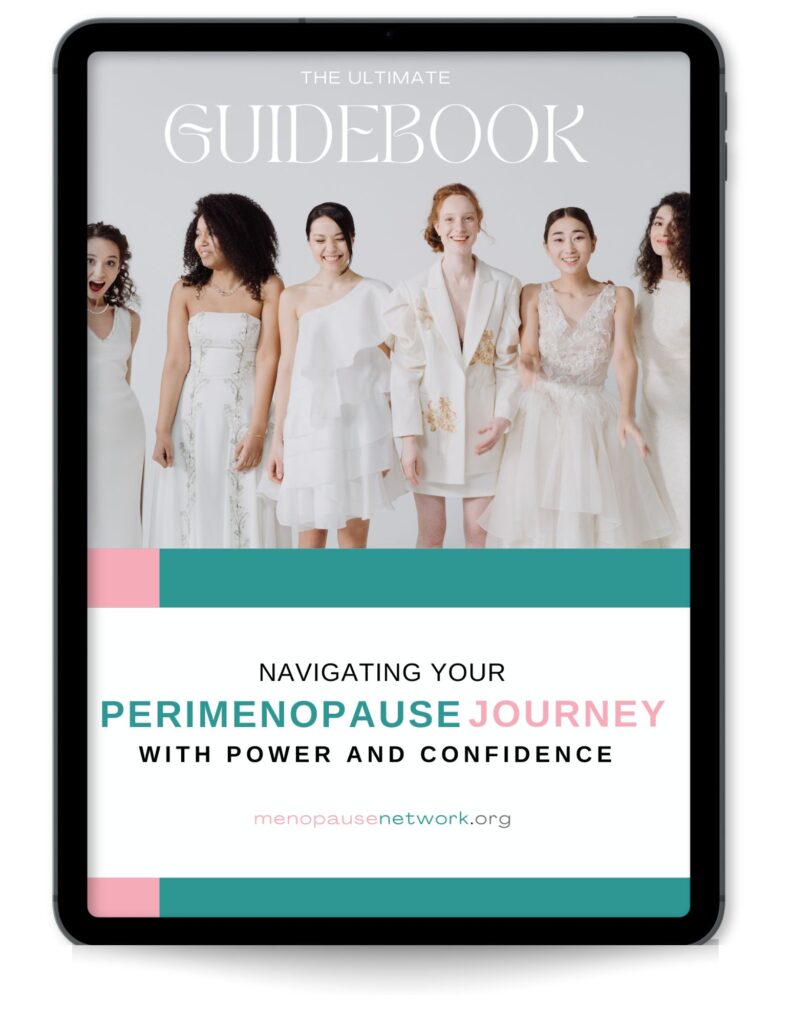The Menopause Conversation Couples Need to Have (But Usually Don’t)
By now, you’ve probably read a hundred articles about hot flashes, brain fog, and hormonal shifts during perimenopause. You know what’s happening inside your body—but does your partner? And more importantly, have you talked about it?
For many couples, perimenopause becomes the elephant in the bedroom. Changes in libido, mood swings, and unpredictable sleep can all sneak into your relationship like uninvited guests. And if nobody’s talking about it, resentment, confusion, and distance can follow.
But here’s the good news: this phase doesn’t have to become a silent standoff. With a little honesty (and some hormone facts), you can turn the perimenopause curveball into a bonding opportunity. Let’s talk about how.
Why This Conversation Matters (More Than You Think)
First, the basics: Perimenopause is the 4- to 10-year transition leading up to menopause, when your body gradually produces less estrogen and progesterone. It usually begins in your 40s, though some women experience it earlier (Santoro et al., 2021).
Hormones influence everything—from your sex drive to your energy levels. So when they shift, your behaviors and moods can too. For partners, this can be confusing at best and relationship-rocking at worst. A 2022 study published in Menopause found that women who reported greater perimenopausal symptoms also reported increased relationship dissatisfaction (Freeman et al., 2022). Not exactly surprising, right?
This is why the conversation is so important. Without it, partners may misinterpret symptoms (like emotional distance or irritability) as rejection or disinterest. When in reality, you might just be trying to survive a night without night sweats.
What Changes Are We Talking About? (And Why They’re Normal)
Here’s a not-so-fun-fact: Estrogen affects over 300 functions in your body. That means perimenopause can feel like an internal rollercoaster—with your partner riding shotgun.
Here’s what might be changing:
1. Mood and Emotions
Hormonal fluctuations—especially in estrogen—can influence serotonin levels, making mood swings more frequent. One minute you’re Netflix-and-chilling, the next you’re crying over a pasta commercial. Yep. It’s all normal.
According to the Mayo Clinic, emotional instability is one of the top reported symptoms of perimenopause, alongside anxiety and irritability (Mayo Clinic, 2023).
Tip: Let your partner know these mood shifts are biochemical—not personal. It helps reframe reactions as symptoms, not slights.
2. Sex Drive and Intimacy
This one’s a biggie. As estrogen and testosterone levels dip, libido can follow. Vaginal dryness and discomfort can also make sex less enjoyable—something 1 in 2 women report during perimenopause (North American Menopause Society [NAMS], 2023).
But it’s not just physical. Emotional closeness, body image, and sleep deprivation all play roles.
Tip: Talk about what feels good now (even if it’s different than five years ago). This is a great time to explore intimacy beyond intercourse. Massage night, anyone?
3. Fatigue and Sleep Disturbances
You’re not imagining it: nearly 61% of women in midlife report trouble sleeping (National Sleep Foundation, 2020). Hormone shifts mess with your circadian rhythms, leaving you tired, cranky, and not exactly in the mood to chat over morning coffee.
Tip: Be upfront about fatigue. A “bad night” isn’t just being tired—it’s a whole-body fog. Communicating this helps your partner adjust expectations and support you more compassionately.
4. Body Image Shifts
Weight gain, bloating, thinning hair… these changes can take a toll on how you feel in your skin. That can make you pull back emotionally or physically without even realizing it.
Tip: Vulnerability goes a long way here. Let your partner in on what you’re experiencing, even if it feels awkward. Connection thrives in honesty.
How to Start “The Talk” (Without Making It Weird)

OK, so we’ve established the importance of the conversation. But how do you actually have it?
Step 1: Pick a Calm Moment (Not Mid-Meltdown)
Avoid starting this talk when you’re overwhelmed or frustrated. Choose a neutral moment—maybe after a walk or during a relaxed dinner.
Opening Line Idea:
“Hey, I’ve been going through some changes lately and I’d love to talk about how it’s been affecting me—and us.”
It’s simple, disarming, and sets the stage for openness.
Step 2: Share Without Blame
Use “I” statements instead of “you.” For example:
“I’ve been feeling more tired than usual, and it’s making me less patient.”
Instead of: “You don’t get how exhausted I am lately.”
This helps keep your partner from going into defense mode.
Step 3: Educate Along the Way
Don’t assume your partner knows what perimenopause even is. (Spoiler: most don’t.)
You might say:
“Perimenopause is this weird time before menopause where hormones go up and down. It can affect sleep, mood, and sex drive. It’s been kind of intense lately.”
Bonus: Pull up a reliable source together. The North American Menopause Society (NAMS) has great explainer videos and charts.
Step 4: Make It a Two-Way Street
Invite your partner into the conversation—not just as a listener, but as someone affected too.
Try: “I know this hasn’t been easy for you either. What’s it been like from your side?”
What If Your Partner Doesn’t Get It? (Yet)
Not every partner will respond with immediate understanding—and that’s okay. It may take time. But that doesn’t mean the conversation was a failure.
Here are a few gentle strategies to keep the dialogue going:
- Share articles or podcasts on perimenopause that explain symptoms clearly (without sounding like a lecture).
- Attend a doctor’s appointment together, especially if hormone therapy or antidepressants are being considered.
- Join a support group (online or IRL) for couples navigating menopause. It normalizes the conversation and offers real-life tips.
What You Both Gain From Talking About It
This isn’t just about managing symptoms—it’s about deepening your connection.
Couples who face challenges together tend to emerge stronger. According to a report from the Journal of Marital and Family Therapy, emotional openness during health transitions can increase relationship satisfaction and resilience (Cowan & Cowan, 2020).
Translation? Talking about menopause can actually make your relationship better.
Expert Tips for Making This Phase Easier—for Both of You
We asked a few pros for advice on surviving perimenopause with your relationship intact.
“Normalize the Changes.”
Dr. Mary Jane Minkin, OB/GYN and clinical professor at Yale University, emphasizes honesty:
“Perimenopause is not a failure of femininity. It’s a biological shift. Couples do better when they view it as a team challenge—not a solo struggle.”
“Sleep Is a Relationship Saver.”
Lack of sleep affects emotional regulation. Prioritize rest by keeping your room cool, dark, and screen-free before bed. Try magnesium glycinate or melatonin (with your doctor’s okay).
“Redefine Intimacy.”
Sex therapist Dr. Alexandra Solomon suggests focusing on “micro-intimacies”—small gestures that maintain closeness. That could mean cuddling during a movie, holding hands, or leaving love notes.
Rewriting the Relationship Rulebook—Together
Perimenopause changes you—but it doesn’t have to change your bond for the worse. With open conversations, empathy, and a willingness to adapt, couples can emerge from this phase closer, not farther apart.
Yes, hormones may be hijacking your body right now. But you still have power—especially when it comes to how you show up in your relationship.
So go ahead, start the talk. It might just be the most important conversation you haven’t had yet.
References
Cowan, P. A., & Cowan, C. P. (2020). Enhancing couples’ relationships and parenting through preventive interventions. Journal of Marital and Family Therapy, 46(2), 294–308. https://doi.org/10.1111/jmft.12397
Rafie, Sally PharmD, BCPS, NCMP, FCCP, FCPhA1; Sandoval, Audra M. PharmD2; Vernon, Veronica P. PharmD, BCPS, BCACP, NCMP3; Cook, Elizabeth A. PharmD, AE-C, BCACP, CDES4. A report on pharmacists with the NCMP credential. Menopause 29(5):p 599-605, May 2022. | DOI: 10.1097/GME.0000000000001942
Mayo Clinic. (2023). Perimenopause: Symptoms & causes. Retrieved from https://www.mayoclinic.org/diseases-conditions/perimenopause/symptoms-causes/syc-20354666
National Sleep Foundation. (2020). Women and sleep. Retrieved from https://www.sleepfoundation.org/articles/women-and-sleep
North American Menopause Society. (2023). Sexual health and menopause. Retrieved from https://www.menopause.org/for-women/sexual-health-menopause-online
Santoro, N., Epperson, C. N., & Mathews, S. B. (2015). Menopausal Symptoms and Their Management. Endocrinology and metabolism clinics of North America, 44(3), 497–515. https://doi.org/10.1016/j.ecl.2015.05.001




























